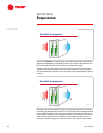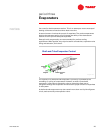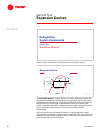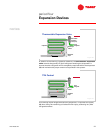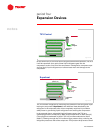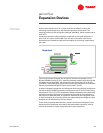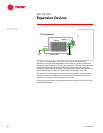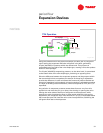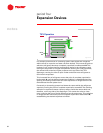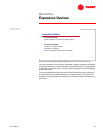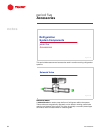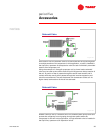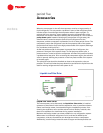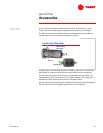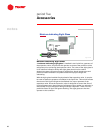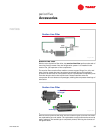
32 TRG-TRC005-EN
notes
period four
Expansion Devices
For example, assume that an increasing system load causes the refrigerant
within the coil to vaporize at a faster rate than desired. This moves the point at
which the refrigerant becomes completely vaporized from A toward B. This
increase in coil surface used for superheating results in the refrigerant vapor
leaving the evaporator at a higher temperature. Sensing the rising superheat,
the remote bulb transmits a higher pressure to the top side of the TXV
diaphragm, causing the valve to open further and allow more refrigerant to
flow into the evaporator.
This increased flow of refrigerant moves the point of complete vaporization
back toward A, until the desired superheat condition is reestablished and the
opening and closing forces within the valve equalize at a refrigerant flow rate
that balances the new system load.
Conversely, a decreasing system load slows the rate at which the refrigerant
vaporizes, moving the point of complete vaporization toward C. The resulting
reduction in superheat creates a lower pressure inside the remote bulb and,
therefore, on the top side of the diaphragm. This causes the valve to close
more, reducing the flow of liquid refrigerant into the evaporator. This reduction
in refrigerant flow moves the point of complete vaporization back toward A,
reestablishing the desired superheat condition.
TXV Operation
TXV
TXV
external equalizer
external equalizer
remote
remote
bulb
bulb
AB
C
Figure 47



